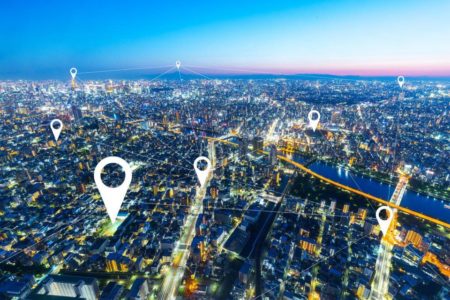Over the past couple of years, one of the top phrases in every press release, conference keynote or analyst report has been “Digital Transformation,” and for good reason. A recent Gartner survey found that 62% of CEOs had a management initiative or transformative program for building their digital business. But what businesses may not realize is that location and time data can play a foundational role in digital transformations.
Gartner defines “digital business” as the creation of new business designs by blurring the digital and physical worlds. It is location and time that connects these two worlds. Understanding when and where someone or something of interest is, can answer a plethora of questions.
In fact, a recent incident involving the fitness app Strava demonstrated how powerful location and time data can be, particularly when patterns are represented visually on a map. Strava published heat maps based on user activity that inadvertently exposed locations of classified US army bases.

So What Is Location Intelligence?
Location Intelligence is more than visualizing information on a map. Location Intelligence allows businesses to drill down and analyze location and time data together to better understand the entity that’s most valuable to them.
- For marketers, this can mean understanding consumer preferences, behavior and loyalty better, based on when, where and how often someone shows up.
- For customer support, this can mean creating a better customer experience since physical location is usually a big part of servicing a customer. Predicting arrival, delivering timely solutions to urgent issues, and routing all play a big part in location and time service activities.
- For R&D and business development, this can mean reducing risk from future investments such as where to open a new store, where to drill a new well or where to construct a new cell tower. Demographic segmentation based on location plays a big role in all these decisions.
Location Intelligence is growing in importance. Forbes reported that 66% of enterprises rank Location Intelligence as either critical or very important to ongoing revenue growth strategies based on a 2018 study.
Connecting The Physical And Digital Worlds
Building a connection between a digital entity and its physical location was a lot harder to establish in the past. Location data was harder to come by, and even when available, there were accuracy and quality issues. The rise of the Extreme Data Economy with the Internet of Things and smart devices has changed this quite a bit. In addition to mobile GPS data, smart devices have a location and are constantly emitting data over time. In fact, sources of location data range from web apps, mobile devices, customer service interactions, digital interactions, point of sale systems, GPS devices and more.
So now the questions that businesses need to address are: what can they do with location and time data and which technologies can analyze it best?
What Can You Do With Location And Time Data?
Gartner predicts, that by 2022, 30% of customer interactions will be influenced by real-time location analysis, up from 4%. This is due to the pressure to improve the speed and accuracy of business processes and deliver contextually-relevant experiences.
Businesses that generate location data can create new revenue streams by building data services for other companies and industries. Telecom companies, for example, generate a huge amount of location data with high value that can be sold to retailers and other businesses. The same is true for payment processing vendors. Location data is valuable, even when anonymized to maintain user privacy.
Location Intelligence plays an important role in improving operational efficiency across telecom, logistics and utility organizations. Location analysis on network usage can help identify periods of heavy network usage, forecast network capacity, and plan for potential network outages or short-term surges.
Location is starting to play a part in fraud detection as well. Financial services use a combination of location and time data to prevent fraud. Using location for fraud detection is also applicable to any kind of product or drug fulfillment service such as prescription medication pickups at pharmacies.
Which Technologies Can Analyze It Best?
Once a business understands how best to leverage location data, the next question that needs to be answered is: what technology can be used to harness these hidden insights? In general, geospatial technologies include many different aspects – geospatial data query engines, geo processors, location data rendering engines and location data visualization tools. But not all data and analytics technologies support spatial or location data. In fact, most of the traditional databases, like Oracle or Microsoft SQL Server, only offer the most basic support for static location data as a part of the query engine. They do not support real-time or streaming data or rendering and visualization capabilities. In addition, analyzing today’s spatial data emanating from a range of sources at high speed and asking complex questions of it, is a compute-intensive problem that existing CPU-based technologies struggle to keep up with.
However, with NVIDIA (NASDAQ: NVDA) making GPUs (Graphics Processing Units) more general purpose, newer technologies are now available that not only provide native support for location data, but also allow advanced location analysis and visualization within a single engine. For example, the Kinetica GPU-database engine supports advanced location intelligence, including 80+ geospatial functions, WMS support, server-side rendering, geospatial visual dashboards with heat map capability and much more – all this purpose-built for GPUs.
It’s time for businesses to understand the importance of location and time data as they transition towards becoming a digital business. Over time, businesses that are most effective at leveraging data as an asset will be the ones that thrive, and location and time dimensions will increasingly become more important. The businesses that provide contextual location-aware experiences and make location-driven decisions for improving operations and future expansions will have the competitive edge. The technology to help you get there has arrived.
Editors Note: This article was originally published in Forbes on 7/31/18.
Nohyun Myung is a geospatial expert and Principal Architect at Kinetica.

